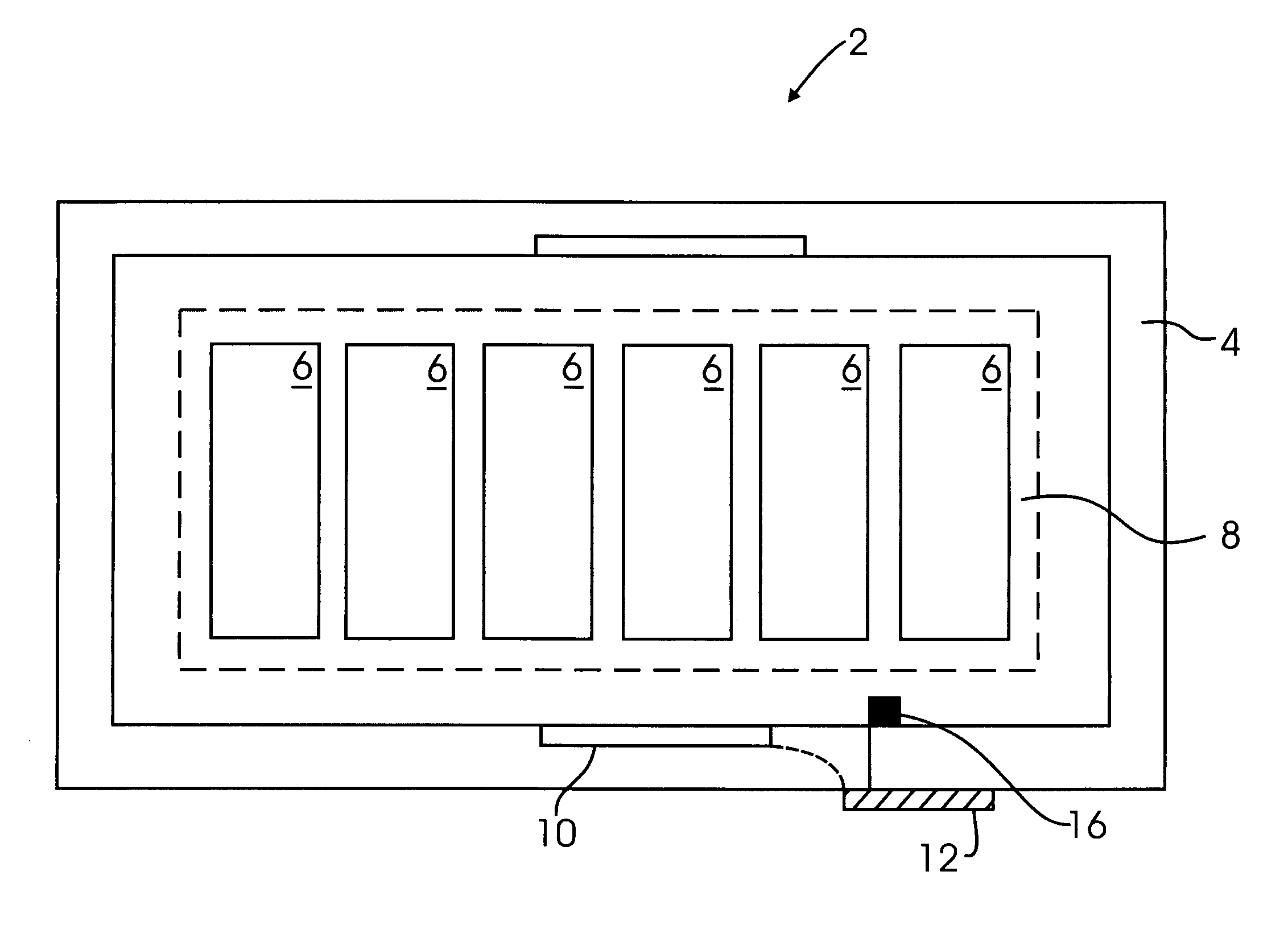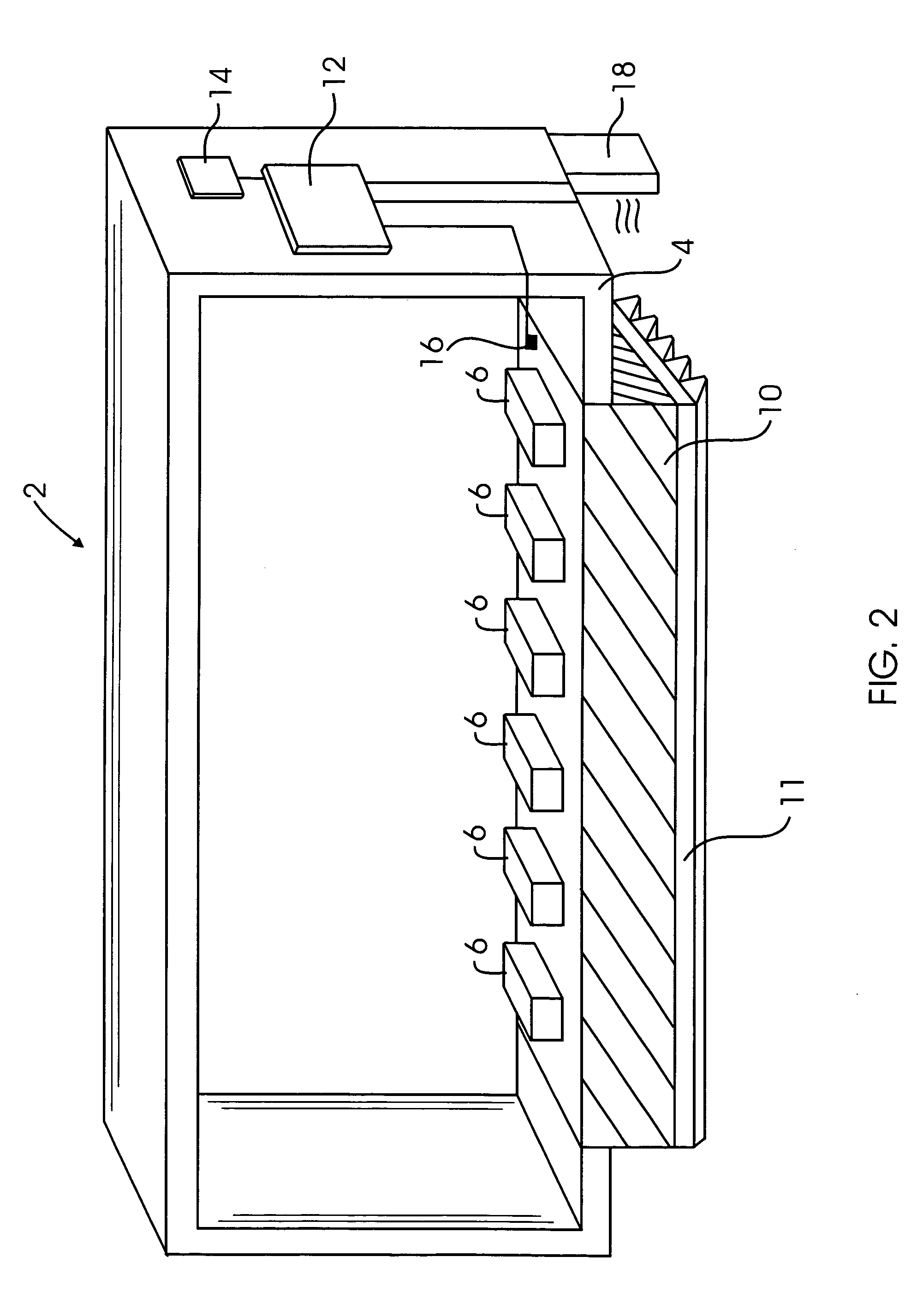Method and apparatus for stabilizing the temperature of dielectric-based filters
a technology of dielectric filters and temperature stabilization, applied in the direction of waveguide devices, resonators, basic electric elements, etc., can solve the problems of adverse frequency shift, large limitation high temperature resistance of current dielectric materials, so as to limit the effect of dielectric constant, reduce the effect of heat dissipation and prolong the li
- Summary
- Abstract
- Description
- Claims
- Application Information
AI Technical Summary
Benefits of technology
Problems solved by technology
Method used
Image
Examples
Embodiment Construction
[0013]FIG. 1 illustrates a dielectric-based device 2 according to a preferred aspect of the invention. The device 2 includes a housing 4 or other compartment containing one or more filters 6. As best shown in FIG. 2, the filters 6 are filters which include a metal housing having a plurality of holes or cavities therein. Dielectric “pucks” are then placed inside the holes in the metal housing to form the complete three-dimensional filter 6. Such filters are known to those skilled in the art. The housing 4 is preferably formed from a thermally insulative material such as, for example, foam. It should be appreciated, however, that other thermal insulators may also be used in accordance with the present invention. The housing 4 may even have one or more thermally insulative layers deposited on a thermally conductive material. For example, the housing 4 may comprise a metallic or thermally conductive interior which is surrounded on the exterior with a thermal insulator such as foam or th...
PUM
 Login to View More
Login to View More Abstract
Description
Claims
Application Information
 Login to View More
Login to View More - R&D
- Intellectual Property
- Life Sciences
- Materials
- Tech Scout
- Unparalleled Data Quality
- Higher Quality Content
- 60% Fewer Hallucinations
Browse by: Latest US Patents, China's latest patents, Technical Efficacy Thesaurus, Application Domain, Technology Topic, Popular Technical Reports.
© 2025 PatSnap. All rights reserved.Legal|Privacy policy|Modern Slavery Act Transparency Statement|Sitemap|About US| Contact US: help@patsnap.com



